Research Projects
Research Projects
Ongoing Minor Research Project: Sponsored by the University of North Bengal
In my previous project (on “Capability and Well-being in the Dooars region of North Bengal”), I have enquired about quality-of-life related issues of forest villagers and tea garden workers in the Dooars region without covering the western part of it. I tried to bridge this gap undertaking the present one titled:
“Living conditions, morbidity and health service use in Mal Sub-division of Jalpaiguri, West Bengal”.
Objectives are similar, as briefed below.
-
Introduction
The valley of Dooars, confined within the political boundary of Mal Subdivision of Jalpaiguri district and beyond, attracts thousands of visitors every year for its maiden beauty from throughout the world. Although the economy, based on three “T”s – Tea, Timber and Tourism, is on the rise, quality of life related issues of the local inhabitants of the region remained somewhat unknown to the rest of the world. The present study tries to bridge the gap by investigating lives and capabilities of the region, especially about how the local inhabitants are provided with the basic capabilities to participate in and to contribute to society. Empirically, it will study, first, living conditions of the inhabitants; second, incidence and prevalence of morbidity in the region; and third, health service use according to type of care and system of medicine. The research project will mainly be based on primary data collected through interviews and visits (including observations and group-discussions) to the rural setups of Mal Subdivision covering nearly 200 households in the region. It will apply simple algebraic and statistical tools including those in medical statistics and public health, and multivariate logistic regression analyses.
-
Objectives
The specific objectives of the study are to evaluate (i) the living conditions of the households focusing on major income and non-income dimensions of well-being; (ii) health status including disability and injuries of the region according to the modalities of recent Global Burden of Disease (GBD) study; and (iii) health service use among the persons in morbid conditions.
-
The initial plan of survey and methods of analysing data
The study plans to cover 16 villages (10 % of the total villages) following Probability Proportional to Size (PPS) Sampling technique taking 12 households from each leading to 192 households effectively for analysis as detailed below.
Table 1. Distribution of Blocks and inhabited villages of Mal Subdivision of Jalpaiguri District
| No. of Sub-Division | Block | No. of inhabited villages | No. of villages chosen (PPS Sampling) | No. of households chosen | Total sample size |
| Mal | Mal | 100 | 10 | 12 households from each village | 192 Households or 960 persons* |
| Matelli | 27 | 3 | |||
| Nagrakata | 33 | 3 | |||
| Total | – | 160 | 16 | – | – |
* If average size of a household is assumed 5.
Source: Census2011 and Self-elaboration
In addition to the above, an oversampling of 4 % will be done to address issues (if any) of misreporting, lack of required information etc. leading to a coverage of 200 households. From each Block, villages and households respectively will be selected covering the widest geographical area to get the true picture of morbidity. Data will be collected primarily following interview techniques and substantiated (in need) by observations, and group-discussions among local participants. Secondary data, as per requirement, will be collected from appropriate reliable sources. Data will be processed with simple algebraic and statistical tools including those in medical statistics and public health, and multivariate logistic regression analyses.
Update (as on 14th February 2021)
The survey was severely affected by unfavourable conditions prevailing in the localities in the latter half of 2019 as well as Covid-19 in beginning of 2020. However, the survey and tabulation of data are now complete. Details of survey and major findings will be shared soon.
Completed Minor Research Project: Sponsored by the University Grants Commission
[UGC Ref. No. F. PHW-136/15-16, dated 01 February 2017]
[Effective date of starting of the project: 22 February 2017]
Title of the project: An analysis of economic efficiency of the primary healthcare system in India and in major States and Union Territories in accordance with deterministic and stochastic frontier approaches
Principal Investigator: Amlan Majumder, Dinhata College
Introduction:
The primary health care system in India is passing through a phase of transition in terms of decentralisation in management and particularly with the issues related to the process of financing. Initially the financing has been largely central and programmatic. The priority at present is on differential financing based on performance indicators of the States, where such indicators include empirical evidences in the demographic and health fronts. In such a situation, it is increasingly being questioned if it would not be more efficient to shift from programme-based financing to performance-based financing, where allocations are linked to achievements of specified indicators that are assessed by independent evaluations. Although the nature of the problem calls for an analysis of the technical efficiency of the system, such studies or instances, in Indian context, are less extensive and less known. The objective of this study is to assess performance of the States by examining the efficiency of the primary healthcare institutions as reflected from the relationships between the inputs used to the system and output produced as expressed in terms of utilisation of services.
Objective:
The primary healthcare system in India has been developed to provide health care services to the vast majority of rural people. It comprises three types of health care institutions: Sub-Centre (SC), Primary Health Centre (PHC) and Community Health Centre (CHC). These institutions were allocated to different locations according to the national norms of population coverage. Also each institution uses different inputs, such as manpower, plant and equipment, and intermediate goods and services (drugs, bandages, etc.) and produces output measured in terms of patients treated or utilisation rates of various healthcare services. As above, the specific objectives of this study are to: (i) examine the available infrastructure of the primary healthcare system by evaluating number of healthcare institutions (in view of national norm of population coverage) and inputs used by them; (ii) quantify the output of the healthcare system; (iii) explore the relationship between input and output by estimating Cobb-Douglas type production function for this health service sector; and (iv) measure technical efficiency scores in accordance with the schematic modalities of Deterministic and Stochastic Frontier Approaches (DFA & SFA).
Completed Minor Research Project: Sponsored by the University Grants Commission
Survey to the forest villages & tea gardens in regard to UGC-sponsored Minor Research Project [UGC Ref. No. F.: PHW-090/10-11 (ERO), dated: 21 October 2010 & 21 March 2013.]
Title of the project: Capability and Well-being in the Dooars region of North Bengal
Principal Investigator: Amlan Majumder, Dinhata College

Brief objective: The study investigates quality of life related issues especially how the forest villagers and plantation workers of Dooars are provided with the basic capabilities to participate in and to contribute to society. Empirically, this study is designed to focus on demographic and epidemiological profiles of the region, health seeking patters, major livelihood activities with other non-income dimensions of well-being.
Proposed study area: Ten forest villages and ten tea gardens in the Dooars region of North Bengal
Work done so far: The first phase of data collection is done during January-March 2012 thanks to the cooperation extended from the Office of the Divisional Forest Officer, Wildlife – III, Cooch Behar (Government of West Bengal, Directorate of Forests) and the following Ranges (and / or Beats). Besides the forest officials, forest villagers, my family, friends, and colleagues have also actively supported me in conducting the survey. Officially and personally, I am grateful to all of them.
Ten forest villages are surveyed so far covering 200 households and 1037 persons (effectively 1034 persons, as three of them passed away within the reference period). Compilation of data is now complete. Ten tea gardens are to be surveyed in near future.
Information were gathered on the following: Identification – i, Household characteristics ii, Demographic characteristics iii, Epidemiologic profile (profile of disease/infirmity/ morbidity) with utilisation of care iv, Daily livelihood activities v, Weekly livelihood activities vi, Seasonal livelihood activities vii, Nutrition viii, Reproductive choices & preferences ix, Subjective well-being & happiness x.
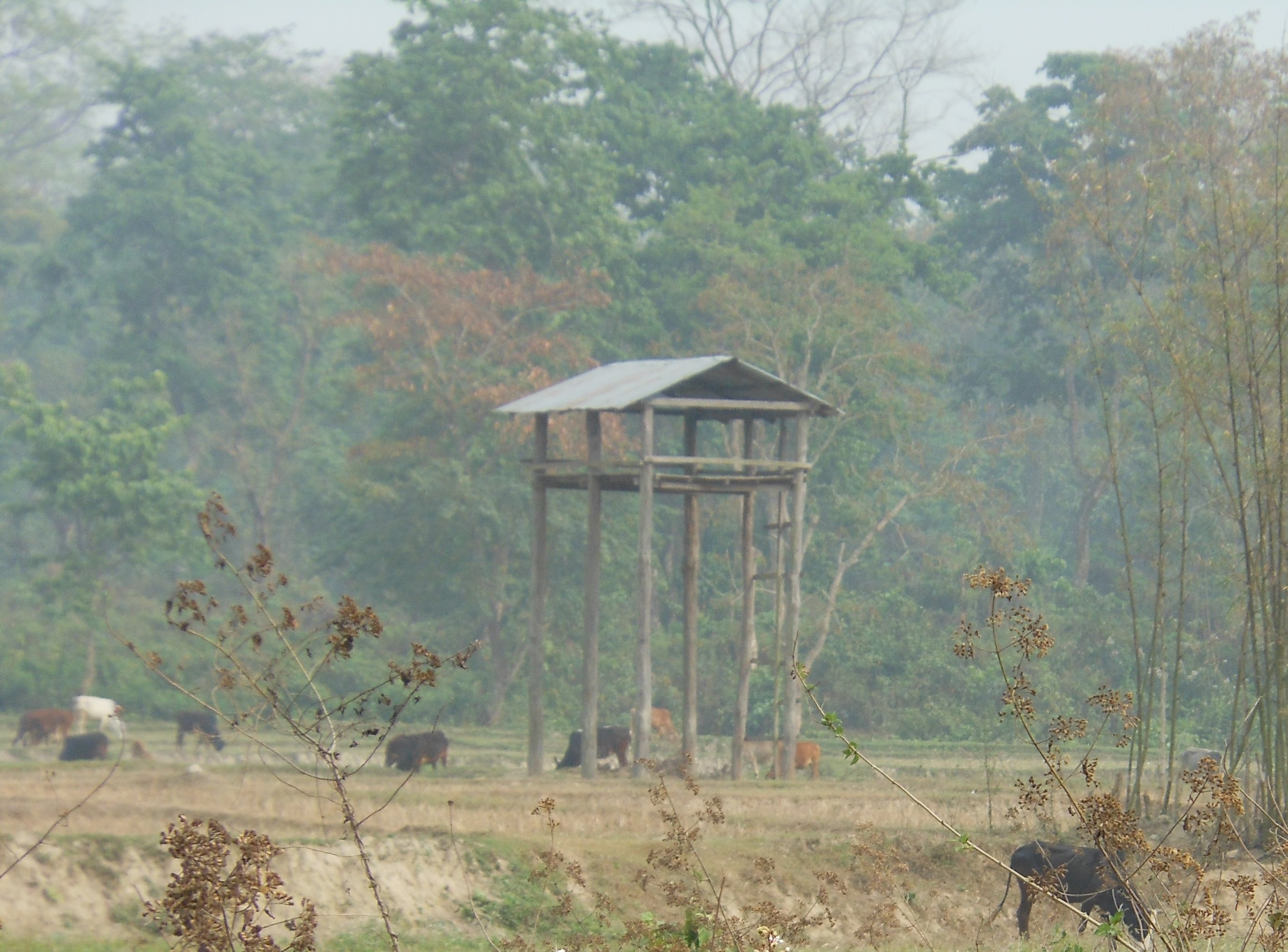
The second phase of the survey was completed during December 2012 – May 2013. covering five broad localities in the tea-plantation belt of Alipurduar Sub-division and ten sampling units (residential clusters) were selected. Total number of households has been 200 with 961 persons.
An E-book (Capability and well-being in the forest villages and tea gardens in Dooars region of North Bengal, ISBN: 978-93-5196-052-2) based on the following Minor Research Project is available here.
Table 1. List of Forest Villages
| Sl. No. | Name of the Range | Name of the Forest Village |
| 1 | Chilapata | Andu |
| 2 | Bania | |
| 3 | Kurmai Basti | |
| 4 | Uttar Mendabari | |
| 5 | Jaldapara South | Salkumar |
| 6 | Kodalbasti | Kodalbasti |
| 7 | Mantharam | |
| 8 | Lankapara | Titi |
| 9 | Madarihat | Dhumchi |
| 10 | North Khairbari |
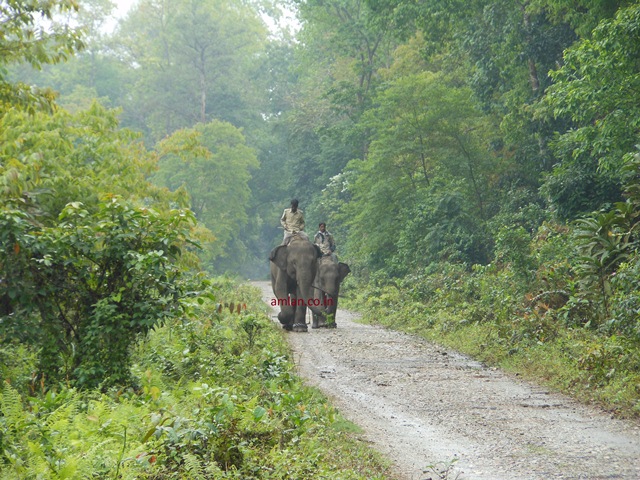
List of households surveyed in the forest villages
Table 2. Name of the Range: CHILAPATA / Name of the Forest Village: ANDU
| Sl. No. | Name of the head of the household/respondent | Size of household |
| 1 | Birsa Rava | 5 |
| 2 | Bivishan Rava | 7 |
| 3 | Bongati Rava | 3 |
| 4 | Budhu Rava | 6 |
| 5 | Etoa Rava | 6 |
| 6 | Japsingh Rava | 6 |
| 7 | Joinal Rava | 5 |
| 8 | Kashi Ram Rava | 5 |
| 9 | Kejib Rava | 5 |
| 10 | Lokeswar Rava | 5 |
| 11 | Mani Rava | 5 |
| 12 | Mukai Rava | 1 |
| 13 | Nagendra Rava | 7 |
| 14 | Raghunath Rava | 5 |
| 15 | Ranjan Rava | 5 |
| 16 | Ratish Rava | 5 |
| 17 | Sadhan Rava | 5 |
| 18 | Shiv Rava | 3 |
| 19 | Sunu Rava | 6 |
| 20 | Upen Rava | 6 |
n=101
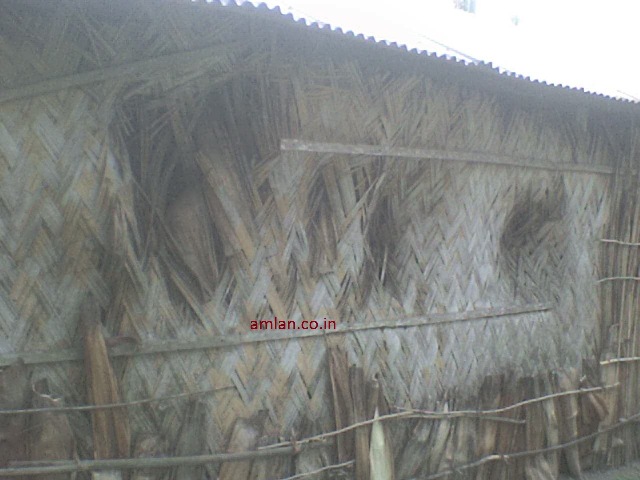
Table 3. Name of the Range: CHILAPATA / Name of the Forest Village: BANIA
| Sl. No. | Name of the head of the household/respondent | Size of household |
| 1 | Babun Rava | 5 |
| 2 | Birsa Orao | 6 |
| 3 | Charoa Orao | 4 |
| 4 | Eta Orao | 3 |
| 5 | Etoa Orao | 5 |
| 6 | Mahindra Rava | 4 |
| 7 | Manga Orao | 3 |
| 8 | Mangal Rava | 8 |
| 9 | Megha Orao | 4 |
| 10 | Nimai Rava | 8 |
| 11 | Nirmal Orao | 6 |
| 12 | Nitai Rava | 4 |
| 13 | Pichhra Orao | 7 |
| 14 | Purna Orao | 6 |
| 15 | Rajkumar Rava | 4 |
| 16 | Runu Orao | 5 |
| 17 | Sachin Rava | 4 |
| 18 | Sonachand Rava | 4 |
| 19 | Subal Rava | 3 |
| 20 | Suresh Rava | 4 |
n=97
Table 4. Name of the Range: CHILAPATA / Name of the Forest Village: KURMAI BASTI
| Sl. No. | Name of the head of the household/respondent | Size of household |
| 1 | Bakul Rava | 6 |
| 2 | Bimal Rava | 3 |
| 3 | Bira Orao | 5 |
| 4 | Birin Orao | 5 |
| 5 | Charoa Orao | 5 |
| 6 | Dharam Orao | 7 |
| 7 | Dhiren Rava | 8 |
| 8 | Donai Rava | 9 |
| 9 | Fuldas Orao | 6 |
| 10 | Hari Orao | 6 |
| 11 | Jate Rava | 7 |
| 12 | Jogeswar Rava | 5 |
| 13 | Kampa Rava | 6 |
| 14 | Lang Rava | 7 |
| 15 | Lodhu Orao | 5 |
| 16 | Loknath Orao | 11 |
| 17 | Pundit Orao | 4 |
| 18 | Rajan Rava | 5 |
| 19 | Sania Orao | 6 |
| 20 | Santeswar Rava | 4 |
n=120
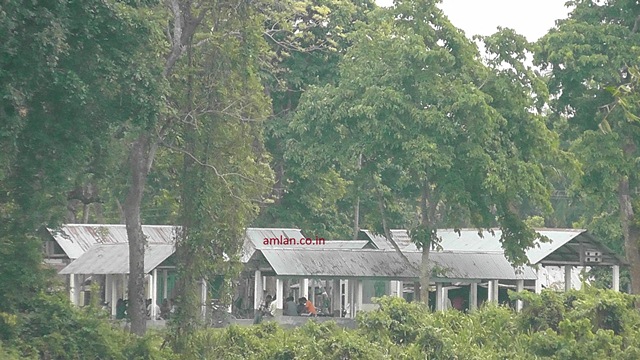
Table 5. Name of the Range: CHILAPATA / Name of the Forest Village: UTTAR MENDABARI
| Sl. No. | Name of the head of the household/respondent | Size of household |
| 1 | Basil Kulu | 8 |
| 2 | Bijnath Rava | 4 |
| 3 | Bimal Rava | 5 |
| 4 | Binod Rava | 5 |
| 5 | Budhua Kharia | 5 |
| 6 | Filmon Kharia | 5 |
| 7 | Fuljain Dum Dum | 6 |
| 8 | James Kerketa | 6 |
| 9 | Kuldeep Kharia | 6 |
| 10 | Lalu Kharia | 6 |
| 11 | Mahesh Minch | 6 |
| 12 | Pritush Tunduna | 3 |
| 13 | Raimohan Rava | 4 |
| 14 | Rajen Rava | 5 |
| 15 | Ram Chandra Minch | 4 |
| 16 | Shibani Kulu | 4 |
| 17 | Siril Kharia | 5 |
| 18 | Sonu Kharia | 6 |
| 19 | Stephan Kullu | 4 |
| 20 | Vim Sen Kulu | 8 |
n=105
Table 6. Name of the Range: JALDAPARA SOUTH / Name of the Forest Village: SALKUMAR
| Sl. No. | Name of the head of the household/respondent | Size of household |
| 1 | Bahadur Rava | 4 |
| 2 | Chila Rava | 7 |
| 3 | Chot Rava | 4 |
| 4 | Deben Rava | 6 |
| 5 | Dilip Rava | 2 |
| 6 | It Rava | 3 |
| 7 | Kanta Rava | 6 |
| 8 | Kedar Rava | 8 |
| 9 | Kumar Rava | 8 |
| 10 | Markash Rava | 7 |
| 11 | Mitary Rava | 8 |
| 12 | Nitai Rava | 4 |
| 13 | Puni Rava | 9 |
| 14 | Ratia Rava | 5 |
| 15 | Roben Rava | 6 |
| 16 | Singh Rava | 3 |
| 17 | Sukku Rava | 4 |
| 18 | Suren Rava | 6 |
| 19 | Tarun Rava | 4 |
| 20 | Tong Rava | 9 |
n=113
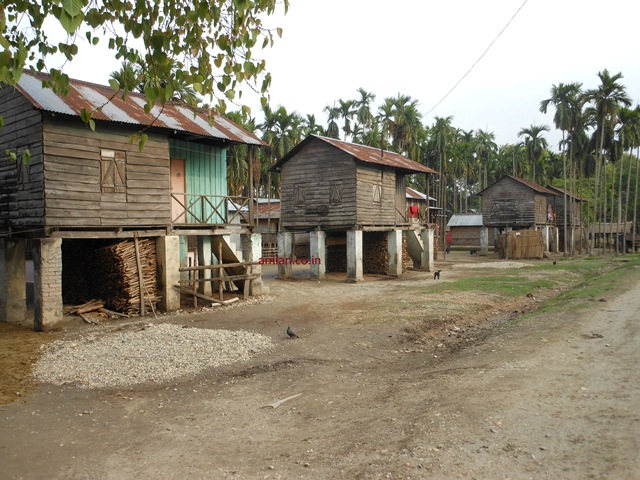
Table 7. Name of the Range: KODALBASTI / Name of the Forest Village: KODALBASTI
| Sl. No. | Name of the head of the household/respondent | Size of household |
| 1 | Ajay Rava | 7 |
| 2 | Anthony Beg | 3 |
| 3 | Bana Lakra | 5 |
| 4 | Bansun Beg | 7 |
| 5 | Bimal Kalkho | 4 |
| 6 | Bimal Rava | 3 |
| 7 | Dilip Chikbari | 4 |
| 8 | Dilip Rava | 8 |
| 9 | Emol Rava | 3 |
| 10 | Kunti Rava | 6 |
| 11 | Malik Rava | 5 |
| 12 | Marianus Kujur | 5 |
| 13 | Niranjan Rava | 6 |
| 14 | Panchan Tirki | 7 |
| 15 | Rekha Rava | 4 |
| 16 | Sakir Rava | 5 |
| 17 | Santosh Beg | 7 |
| 18 | Siliv Rava | 4 |
| 19 | Subhas Beg | 6 |
| 20 | Sunita Toppo | 3 |
n=102
Table 8. Name of the Range: KODALBASTI / Name of the Forest Village: MANTHARAM
| Sl. No. | Name of the head of the household/respondent | Size of household |
| 1 | Ajit Parki | 3 |
| 2 | Amal Narjinary | 2 |
| 3 | Ashish Bagla | 5 |
| 4 | Asmani Rava | 5 |
| 5 | Bipai Tigga | 4 |
| 6 | Foren Basumata | 5 |
| 7 | Gangaram Tigga | 3 |
| 8 | Haren Champvamari | 3 |
| 9 | Joseph Tigga | 3 |
| 10 | Mangra Tigga | 5 |
| 11 | Nikhil Hazari | 5 |
| 12 | Niko Ekka | 4 |
| 13 | Pahar Singh Bakla | 6 |
| 14 | Phalindra Basumatari | 6 |
| 15 | Raju Bakla | 3 |
| 16 | Ranjit Hazari | 4 |
| 17 | Sakhen Hazari | 5 |
| 18 | Sukdeb Tigga | 3 |
| 19 | Sukra Tirki | 7 |
| 20 | Sushil Narjinary | 7 |
n=88
Table 9. Name of the Range: LANKAPARA / Name of the Forest Village: TITI
| Sl. No. | Name of the head of the household/respondent | Size of household |
| 1 | Arati Biswakarma | 6 |
| 2 | Bandana Kharia | 5 |
| 3 | Bandhu Kharia | 3 |
| 4 | Banu Orao | 8 |
| 5 | Bhoja Lakra | 7 |
| 6 | Bhuka Baraik | 10 |
| 7 | Dhaniram Baraik | 7 |
| 8 | Gopal Majhi | 4 |
| 9 | Kedar Lakra | 4 |
| 10 | Kheer Bahadur Chhetri | 8 |
| 11 | Meera Biswakarma | 5 |
| 12 | Prakash Chhetri | 5 |
| 13 | Raja Orao | 3 |
| 14 | Raju Kujur | 6 |
| 15 | Ramkrishna Sharma | 5 |
| 16 | Ratia Orao | 4 |
| 17 | Shibu Majhi | 4 |
| 18 | Sujit Orao | 5 |
| 19 | Sunny Orao | 4 |
| 20 | Tarabeer Chhetri | 4 |
n=107
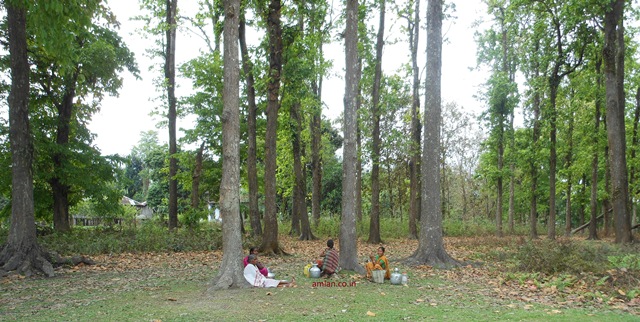
Table 10. Name of the Range: MADARIHAT / Name of the Forest Village: DHUMCHI
| Sl. No. | Name of the head of the household/respondent | Size of household |
| 1 | Aviram Rava | 6 |
| 2 | Chandra Rava | 6 |
| 3 | Debaru Rava | 4 |
| 4 | Dhiren Rava | 3 |
| 5 | Gajendra Rava | 4 |
| 6 | Hardan Rava | 1 |
| 7 | Jesoore Rava | 6 |
| 8 | Kanai Rava | 7 |
| 9 | Kukim Rava | 6 |
| 10 | Kumar Rava | 4 |
| 11 | Madan Rava | 5 |
| 12 | Mukti Rava | 4 |
| 13 | Omar Rava | 4 |
| 14 | Parasuram Rava | 4 |
| 15 | Sambur Rava | 6 |
| 16 | Samsingh Rava | 9 |
| 17 | Sunil Rava | 4 |
| 18 | Debnath Rava | 6 |
| 19 | Tapan Rava | 3 |
| 20 | Udan Rava | 6 |
n=98
Table 11. Name of the Range: MADARIHAT / Name of the Forest Village: NORTH KHAIRBARI
| Sl. No. | Name of the head of the household/respondent | Size of household |
| 1 | Bali Orao | 4 |
| 2 | Lalbeer Orao | 7 |
| 3 | Chan Rava | 4 |
| 4 | Cho Cho Rava | 6 |
| 5 | Choono Rava | 3 |
| 6 | Kho Kho Rava | 7 |
| 7 | Kukin Rava | 6 |
| 8 | Mahadev Karji | 5 |
| 9 | Mariom Orao | 3 |
| 10 | Nilmani Rava | 5 |
| 11 | Pradip Karji | 4 |
| 12 | Raban Rava | 6 |
| 13 | Rajan Rava | 5 |
| 14 | Simon Munda | 6 |
| 15 | Somra Munda | 5 |
| 16 | Sravan Rava | 9 |
| 17 | Sukchand Rava | 7 |
| 18 | Suren Rava | 4 |
| 19 | Suresh Orao | 6 |
| 20 | Tatu Rava | 4 |
n=106
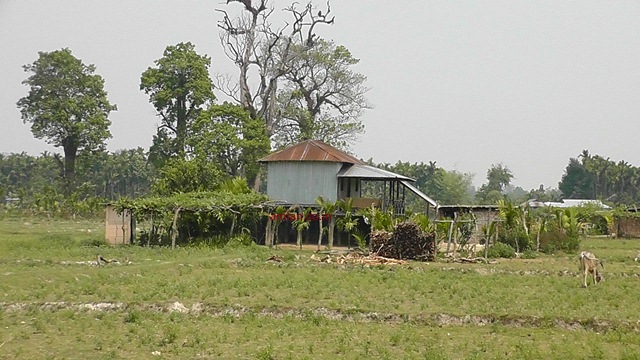
Details of households surveyed in the tea-plantation areas of Dooars
Table 12. Selected areas in the tea–plantation zone in Alipurduar Sub-division
| Name of the broad area | Sampling Units / Cluster. Nos. | Households covered | Persons covered |
| Buxa | I / 4 | 20 | 85 |
| II / 5 | 20 | 90 | |
| Central Dooars – Rangamati | I / 9 | 20 | 112 |
| II / 10 | 20 | 101 | |
| Gangutia | I / 7 | 10 | 53 |
| II / 8 | 20 | 114 | |
| Kalchini | I / 1 | 30 | 136 |
| II / 6 | 20 | 97 | |
| Raimatang | I / 2 | 20 | 112 |
| II / 3 | 20 | 101 | |
| Total | – | 200 | 961 |
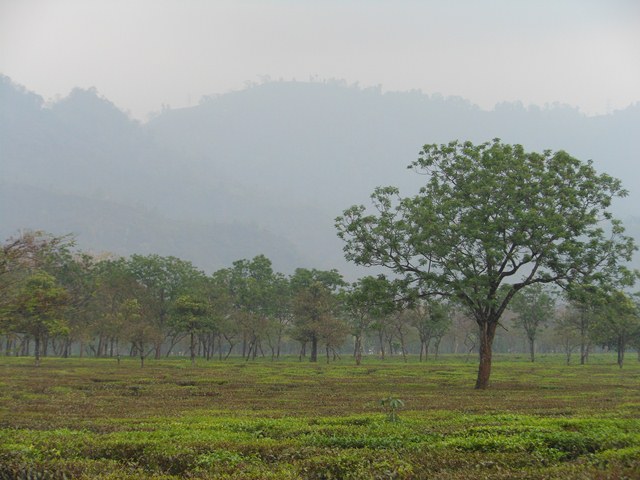
Table 13. List of households covered in the tea-plantation areas
| Sl. No. | Name of the head of the household/respondent | Person | Female | Male |
| 1 | Geeta Chhetri | 3 | 1 | 2 |
| 2 | Shyam Lama | 5 | 3 | 2 |
| 3 | Mandeep Lama | 6 | 4 | 2 |
| 4 | Debimaya Rai | 6 | 5 | 1 |
| 5 | Ahana Lama | 7 | 4 | 3 |
| 6 | Asis Mongar | 4 | 1 | 3 |
| 7 | Uttam Moktan | 4 | 1 | 3 |
| 8 | Boby Moktan | 4 | 2 | 2 |
| 9 | Sanjamaya Lama | 6 | 2 | 4 |
| 10 | Chandan Thapa | 2 | 1 | 1 |
| 11 | Bikas Bhujel | 5 | 2 | 3 |
| 12 | Hiru Pakrim | 4 | 2 | 2 |
| 13 | Karma Lama | 6 | 3 | 3 |
| 14 | Nirmal Chhetri | 3 | 2 | 1 |
| 15 | Sobu Mongar | 2 | 1 | 1 |
| 16 | Asha Mongar | 4 | 3 | 1 |
| 17 | Sushmita Chetri | 7 | 4 | 3 |
| 18 | Pinki Karmakar | 8 | 4 | 4 |
| 19 | Mili Mangar | 3 | 1 | 2 |
| 20 | Bunu Thapa | 4 | 3 | 1 |
| 21 | Rina Tamang | 5 | 3 | 2 |
| 22 | Amar Thapa | 5 | 3 | 2 |
| 23 | Arjun Lama | 3 | 1 | 2 |
| 24 | Poonam Mangar | 4 | 2 | 2 |
| 25 | Pushpal Bujen | 5 | 2 | 3 |
| 26 | Malati Kami | 6 | 2 | 4 |
| 27 | Puspa Lama | 5 | 2 | 3 |
| 28 | Chemda Tamang | 6 | 3 | 3 |
| 29 | Gita Bashfore | 6 | 5 | 1 |
| 30 | Hari Sankar Naik | 6 | 2 | 4 |
| 31 | Kanchha Chetri | 5 | 2 | 3 |
| 32 | Krishna Bahadur Sastri | 3 | 1 | 2 |
| 33 | Nantu Teli | 5 | 3 | 2 |
| 34 | Hari Gurung | 5 | 1 | 4 |
| 35 | Kul Bahadur Gurung | 6 | 4 | 2 |
| 36 | Mina Thokar | 5 | 4 | 1 |
| 37 | Sarki Lama | 3 | 1 | 2 |
| 38 | Santa Bahadur Zimba | 7 | 4 | 3 |
| 39 | Kaley Thken | 4 | 1 | 3 |
| 40 | Ashok Lama | 4 | 2 | 2 |
| 41 | Ashim Tamang | 3 | 2 | 1 |
| 42 | Srimaya Dorji | 6 | 6 | 0 |
| 43 | T. Dorji | 1 | 1 | 0 |
| 44 | Jairaj Dorji | 3 | 2 | 1 |
| 45 | Swaraj Dorji | 5 | 3 | 2 |
| 46 | Sanjay Damai | 3 | 2 | 1 |
| 47 | Babuttam Dorji | 1 | 0 | 1 |
| 48 | Monika Dorji | 3 | 1 | 2 |
| 49 | Aman Subba | 5 | 2 | 3 |
| 50 | Durga Subba | 4 | 2 | 2 |
| 51 | Radhika Subba | 6 | 5 | 1 |
| 52 | Saraja Subba | 4 | 2 | 2 |
| 53 | Niranjan Subba | 5 | 1 | 4 |
| 54 | Hema Dorji | 5 | 3 | 2 |
| 55 | Rupa Rajput | 4 | 2 | 2 |
| 56 | Shankar Rajput | 1 | 0 | 1 |
| 57 | Desha Morao | 5 | 3 | 2 |
| 58 | Dukhu Marao | 3 | 1 | 2 |
| 59 | Baburam Chetri | 4 | 2 | 2 |
| 60 | Dakbahadur Bhugal | 4 | 2 | 2 |
| 61 | Kiran Gurung | 2 | 1 | 1 |
| 62 | Furba Lama | 2 | 1 | 1 |
| 63 | Mekhbahadur Chetri | 3 | 1 | 2 |
| 64 | Kamal Chetri | 2 | 1 | 1 |
| 65 | Nirmal Chetri | 3 | 1 | 2 |
| 66 | Kumar Chetri | 5 | 3 | 2 |
| 67 | Bishnu Sharma | 4 | 3 | 1 |
| 68 | Santosh Mangar | 8 | 3 | 5 |
| 69 | Sankar Majhi | 2 | 1 | 1 |
| 70 | Sachin Rajput | 7 | 3 | 4 |
| 71 | Kuber Sharma | 9 | 4 | 5 |
| 72 | Kamala Rajput | 5 | 4 | 1 |
| 73 | Paras Gurung | 5 | 1 | 4 |
| 74 | Bikram Lama | 6 | 3 | 3 |
| 75 | Ashim Tamang | 4 | 3 | 1 |
| 76 | Kanchi Dorji | 6 | 5 | 1 |
| 77 | Tukuni Tamang | 2 | 1 | 1 |
| 78 | Rubai Tamang | 4 | 2 | 2 |
| 79 | Prakash Mangar | 5 | 4 | 1 |
| 80 | Aiti Tamang | 1 | 1 | 0 |
| 81 | Raja Munda | 5 | 2 | 3 |
| 82 | Bhola Rabidas | 6 | 3 | 3 |
| 83 | Shila Munda | 3 | 1 | 2 |
| 84 | Sebak Munda | 5 | 1 | 4 |
| 85 | Sukho Munda | 5 | 2 | 3 |
| 86 | Buas Munda | 4 | 2 | 2 |
| 87 | Gopal Munda | 6 | 2 | 4 |
| 88 | Kalyan Orao | 5 | 2 | 3 |
| 89 | Marian Orano | 4 | 2 | 2 |
| 90 | Pasang Lama | 3 | 1 | 2 |
| 91 | Sima Soren | 3 | 1 | 2 |
| 92 | Fransis Munda | 4 | 2 | 2 |
| 93 | Birendra Munda | 2 | 1 | 1 |
| 94 | Ramu Munda | 4 | 2 | 2 |
| 95 | Robert Kharia | 4 | 2 | 2 |
| 96 | Edwin Sorenz | 4 | 2 | 2 |
| 97 | Deonis Soreng | 6 | 3 | 3 |
| 98 | Kaila Dorji | 6 | 3 | 3 |
| 99 | Pancham Orao | 7 | 2 | 5 |
| 100 | Bharat Dorji | 4 | 2 | 2 |
| 101 | Budhua Munda | 5 | 2 | 3 |
| 102 | Anand Dorji | 3 | 1 | 2 |
| 103 | Kancha Dorji | 6 | 3 | 3 |
| 104 | Padam Dorji | 2 | 1 | 1 |
| 105 | Raju Dorji | 4 | 1 | 3 |
| 106 | Anil Samashi | 3 | 2 | 1 |
| 107 | Joseph Kharia | 6 | 3 | 3 |
| 108 | Salomi Kharia | 2 | 1 | 1 |
| 109 | Birsa Oraon | 2 | 1 | 1 |
| 110 | Kuldip Kharia | 5 | 4 | 1 |
| 111 | Naresh Munda | 5 | 3 | 2 |
| 112 | Jueal Kharia | 4 | 3 | 1 |
| 113 | Dewnesh Soren | 6 | 3 | 3 |
| 114 | Benzamin Khaka | 6 | 4 | 2 |
| 115 | Etowa Oraon | 6 | 2 | 4 |
| 116 | Prem Singh Rabidas | 6 | 2 | 4 |
| 117 | Tilak Bahadur Chhetri | 4 | 0 | 4 |
| 118 | Anupa Mangar | 6 | 2 | 4 |
| 119 | Bimal Topo | 8 | 3 | 5 |
| 120 | Rupa Dorji | 8 | 3 | 5 |
| 121 | Ephrem | 5 | 2 | 3 |
| 122 | Shanti Karketa | 7 | 3 | 4 |
| 123 | Sahbaz Ansari | 6 | 3 | 3 |
| 124 | Nakresh Munda | 7 | 3 | 4 |
| 125 | Sudesh Sekh | 5 | 2 | 3 |
| 126 | Libin Soren | 4 | 1 | 3 |
| 127 | Asisan Munda | 5 | 2 | 3 |
| 128 | Jetha Dorji | 4 | 2 | 2 |
| 129 | Poulush Karketa | 3 | 1 | 2 |
| 130 | Anisa Sarki | 7 | 4 | 3 |
| 131 | Basanta Orao | 7 | 5 | 2 |
| 132 | Mamta Munda | 6 | 4 | 2 |
| 133 | Mina Dorji | 3 | 2 | 1 |
| 134 | Paulin Munda | 2 | 1 | 1 |
| 135 | Philesita Khaka | 6 | 2 | 4 |
| 136 | Prokash Lama | 8 | 7 | 1 |
| 137 | Shyam Kumar Gurung | 6 | 5 | 1 |
| 138 | Mani Kumar Bishwa | 8 | 4 | 4 |
| 139 | Shomta Kumar Thapa | 5 | 3 | 2 |
| 140 | Laxman Lama | 6 | 4 | 2 |
| 141 | Narayan Gurung | 5 | 3 | 2 |
| 142 | Rambahadur Majhi | 8 | 4 | 4 |
| 143 | Jayraj Lama | 9 | 6 | 3 |
| 144 | Madan Lama | 6 | 3 | 3 |
| 145 | Ganga Maya Majhi | 5 | 4 | 1 |
| 146 | Seema Bardeva | 4 | 2 | 2 |
| 147 | Bhola Rai | 3 | 1 | 2 |
| 148 | Saila Bishwa | 4 | 2 | 2 |
| 149 | Laxmi Majhi | 7 | 3 | 4 |
| 150 | Chandan Bishwa | 6 | 3 | 3 |
| 151 | Dal Bahadur Rai | 7 | 3 | 4 |
| 152 | Karan Subba | 5 | 1 | 4 |
| 153 | Kanchha Gurung | 3 | 1 | 2 |
| 154 | Deepsen Rai | 5 | 2 | 3 |
| 155 | Ravi Rai | 4 | 1 | 3 |
| 156 | Binod Majhi | 3 | 1 | 2 |
| 157 | Ashok Rai | 1 | 0 | 1 |
| 158 | Bishnu Thapa | 5 | 3 | 2 |
| 159 | Soren Rai | 5 | 4 | 1 |
| 160 | Sekhar Rai | 5 | 3 | 2 |
| 161 | Buddham Lama | 4 | 2 | 2 |
| 162 | Shakti Gurung | 3 | 1 | 2 |
| 163 | Krishna Mangar | 4 | 2 | 2 |
| 164 | Karna Bahadur Thapa | 9 | 4 | 5 |
| 165 | Bhaktibir Thapa | 6 | 3 | 3 |
| 166 | Kamal Biswakarma | 4 | 2 | 2 |
| 167 | Kalu Thapa | 6 | 2 | 4 |
| 168 | Dal Bahadur Thapa | 3 | 2 | 1 |
| 169 | Bimal Thapa | 4 | 2 | 2 |
| 170 | Krishna Bahadur Rai | 5 | 3 | 2 |
| 171 | Sher Bahadur Karma | 7 | 4 | 3 |
| 172 | Tilak Chhetri | 9 | 5 | 4 |
| 173 | Angad Thapa | 7 | 3 | 4 |
| 174 | Arjun Lama | 8 | 5 | 3 |
| 175 | Duppu Mongar | 8 | 4 | 4 |
| 176 | Birish Nagasia | 7 | 3 | 4 |
| 177 | Chamra Nagasia | 6 | 2 | 4 |
| 178 | Sujit Gurung | 3 | 2 | 1 |
| 179 | Ajay Rai | 4 | 3 | 1 |
| 180 | Rupa Lama | 5 | 3 | 2 |
| 181 | Some Lama | 8 | 5 | 3 |
| 182 | Sabnam Gurung | 5 | 3 | 2 |
| 183 | Nutun Gurung | 3 | 2 | 1 |
| 184 | Bikram Gurung | 9 | 5 | 4 |
| 185 | Kancha Gurung | 4 | 2 | 2 |
| 186 | Chita Kanchi Lama | 6 | 3 | 3 |
| 187 | Ram Kumar Biswakarma | 4 | 2 | 2 |
| 188 | Mahesh Biswakarma | 4 | 2 | 2 |
| 189 | Rupa Rai | 8 | 5 | 3 |
| 190 | Mina lama | 4 | 2 | 2 |
| 191 | Parbat Rai | 3 | 2 | 1 |
| 192 | Chameli Thapa | 5 | 4 | 1 |
| 193 | Gopal Biswakarma | 7 | 3 | 4 |
| 194 | Urmila Biswakarma | 5 | 3 | 2 |
| 195 | Magal Singh lama | 4 | 2 | 2 |
| 196 | Pratap Thapa | 4 | 1 | 3 |
| 197 | Jit Bahadur Rai | 7 | 3 | 4 |
| 198 | Bimla Pradhan | 4 | 3 | 1 |
| 199 | Madan Thapa | 4 | 1 | 3 |
| 200 | Sankar Lama | 3 | 2 | 1 |
| Total | – | 961 | 489 | 472 |
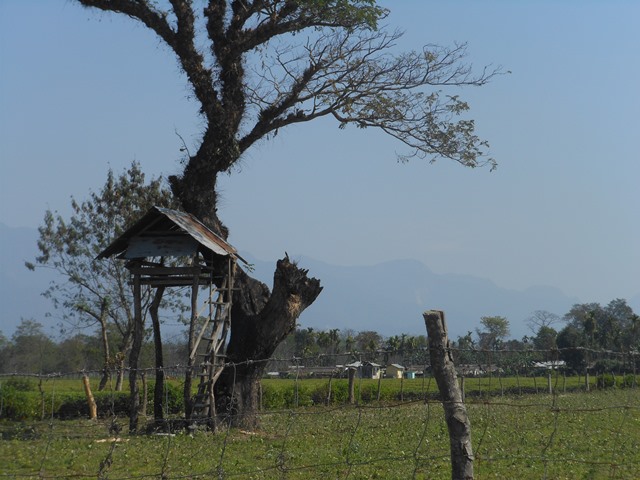
The project is complete . The Executive Summary is presented below.
Forest villages and tea gardens in Dooars were created as public and private estates respectively during the latter half of the 19th century under the British rule conscripting local and migrated tribal people into bonded labour relationship. Although issues and strategies with organisation and governance as well as contexts of the labourers have undergone extensive changes over the centuries, lives and capabilities of the region remained somewhat unknown to the rest of the world.
This study tries to bridge the gap by investigating quality of life related issues especially about how the forest villagers and tea-plantation workers of the region are provided with the basic capabilities to participate in and to contribute to society. Empirically, it studies, first, living conditions of the inhabitants; second, the burden of disease, disability and injuries in the region; and third, health seeking behaviour according to type of care and system of medicine. The study is mainly based on primary data collected through interviews and visits during 2012-2013 covering 400 households in the region. It applies simple algebraic and statistical tools including those in public health, and binary as well as multinomial logistic regression analyses.
Although forest villagers and tea-plantation workers are undoubtedly poor, in respect to housing amenities and sanitation their condition is better than the average condition prevailing in the rural areas of the district, Jalpaiguri. They are moderately educated where average years of schooling for the population aged 15 and above are 3.5 and 4.8 in the forest villages and tea-plantation areas respectively. However, significant differences exist in terms of access to food between these two types of residential clusters. While an index of the same shows a value of 0.77 in 0-1 point scale for the forest villagers, the value for the latter appears to be 0.47 only. In regard to morbidity, communicable and infectious diseases predominate in the region (49-51 %) followed by non-communicable diseases (46 %) and injuries (2-5 %). In regard to disability, two per cent of the forest villagers are functionally disabled and 1.9 per cent are physically challenged. Such percentage figures for the latter are 3.4 and 1.2 respectively. Although provision of health care is almost invisible within the proximity of the residential clusters, many of the health seekers travel outwards to utilise public care (36-40 %). Reliance on self-treatment or else (15-32 %) and that on private care (28-49 %) are seen high. Preference for Allopathy is quite high (58 – 81 %) in contrast to that of the traditional systems (18-41 %). Multivariate analyses show that health seeking behaviour is significantly correlated with the characteristics of disorder. Finally, primary livelihood activities in the forest villages are seen as affected by man-animal conflicts and not all the alternative livelihood activities are found desirable and it warrants appropriate policies or attention.
Completed Minor Research Project: Sponsored by the University Grants Commission
[F.PHW 083 / 03-04-ERO, dated 12 March 2004]
Title of the project: Economics of Health Care: A Study of Health Services Utilisation in Cooch Behar and Jalpaiguri Districts of North Bengal
Principal Investigator: Amlan Majumder, Dinhata College
Summary:
Summary: We have witnessed radical changes in infrastructure of health services and pattern of utilisation of care over the years in all parts of the country. An enquiry into the fact would unveil some of the important alterations like introduction of user fees or more specifically hike in fees structure in the public health facilities, emergence of numerous private sources of care and revealed preference for alternative systems of medicine among rural and urban mass. Important research questions at this point are that whether demand for public health facilities has decreased or whether pattern of morbidity has changed or whether people’s perception on illness has altered leading to a change in the appeal towards a particular type of care or system of medicine. The present study will investigate such research questions empirically in the rural and urban areas of Cooch Behar and Jalpaiguri districts of North Bengal.
Economists began to turn their attention to the matters concerning the efficiency in the health service sector around the end of the 1950s. Much of the controversies regarding application of economics to health care analysis waned when Fuchs defined health service sector as health care industry, which provides different types of outputs such as medical services, hospitality or hotel services, and validation services to people utilising different inputs. These services are output of the health care industry measured in terms utilisation of health facilities. The inputs of health care industry are: manpower, plant and equipment, and drugs, bandages, etc. Empirical studies within this framework of supply side economics of health care began with the work of Feldstein. He estimated Cobb-Douglas type production function of hospitals for the British National Health Service. Studies in the demand side of health care economics also follow a similar framework, which considers a set of non-economic factors such as age, gender, education, culture, etc. with the economic ones. Utilisation of health services depends both on demand and supply of consumers and providers. Studies on utilisation of health services fall under a mixed demand-supply framework. However, the problem of health services utilisation should be analysed in an interdisciplinary framework as it has been dealt with not only by the economists but also by the anthropologists, demographers, doctors, geographers, sociologists and others.
The study is based on primary data collected through interview technique. The survey has been conducted in the rural and urban areas of Cooch Behar and Jalpaiguri districts of North Bengal. The study has three facets: morbidity analysis, study of household’s preference for a care, and multivariate analyses (comprising Logistic Regression Analysis, and Multiple Classification Analysis).
The study revealed that in rural areas of the districts, real burden of disease is very high. Both the incidence and prevalence rates of disease are markedly above than the national and state-level averages. People suffer more from communicable and other diseases, which prevail in the pre-transitional societies. Burden of non-communicable diseases and injuries are, however, high in urban areas. According to the phenomenon of epidemiological transition, rural areas of this region remain in the pre-transitional stage, and the urban areas are passing through the mid-transitional stage. However, health care infrastructure of this region is not competent enough to meet such complex needs.
The study indicates that in rural areas people utilised public health facilities mostly because of their availability in local areas or no other option was available to them or inexpensiveness of those as compared to the private ones. People in the urban areas preferred public health facilities for financial reasons: either price of a care or affordability of households. The main reason behind choosing private type of care both in rural and urban areas has been quality of care. Both rural and urban dwellers prefer Allopathy for quick relief, permanent cure, reliability, etc. and Homeopathy as it is cheap, good for children, and as it is assumed to have no side effect. These information can hopefully be used for policy prescriptions for this particular region.
Among the characteristics of the subject, demographic factors like age, and family size have been found important determinants of utilisation of care. The regression analyses indicate that children are by and large neglected. Probability of utilisation is seen higher in small families. It has been found that those households whose heads make frequent trips, have a tendency to utilise care more. It carries a good message, as in the pace of development social mobility will increase which will always contribute to the probability of utilising a care. The demand for public health facilities is tremendously high as compared to that of private health facilities in rural areas of the districts. The effect is too strong to hold well in the area as a whole (combined category) also. Probability of utilisation is very high in rural areas when the preference for the system of medicine is Homeopathy. As the demand for Homeopathy is very high in rural areas, appropriate measures should be taken to introduce it in the primary health care system. Availability of health facilities is seen to have negative impact towards utilisation of a care. The underlying assumption was that in the urban areas health facilities are available. However, the result indicates that as compared to the people of the rural areas, urban dwellers are likely to avoid utilising a care from modern source. This points out higher chances of self-treatment or family-treatment or other by the urban dwellers. On the contrary higher chances of utilisation of care are there from modern sources in towns by the rural people who generally experience unavailability of health facilities in their local areas. Cost of treatment seems to affect utilisation of care positively. It indicates that people are compelled to pay more when they seek care from modern sources. Cost or price of care does not play usual role as it does in case of other economic goods. The study thus draws attention of the policy makers, which is very crucial to determine the strategy of delivering health care in North Bengal in this phase of transition.
An E-book (Majumder, A. 2014. Economics of health care utilisation: a study of self-reported morbidity and health seeking patterns in the districts of Cooch Behar and Jalpaiguri, West Bengal, India (E-book), Cooch Behar: Self-published. (ISBN: 9789351961741) based on the above-mentioned Minor Research Project is available here.

For more information please write me to: amlan@amlan.co.in.